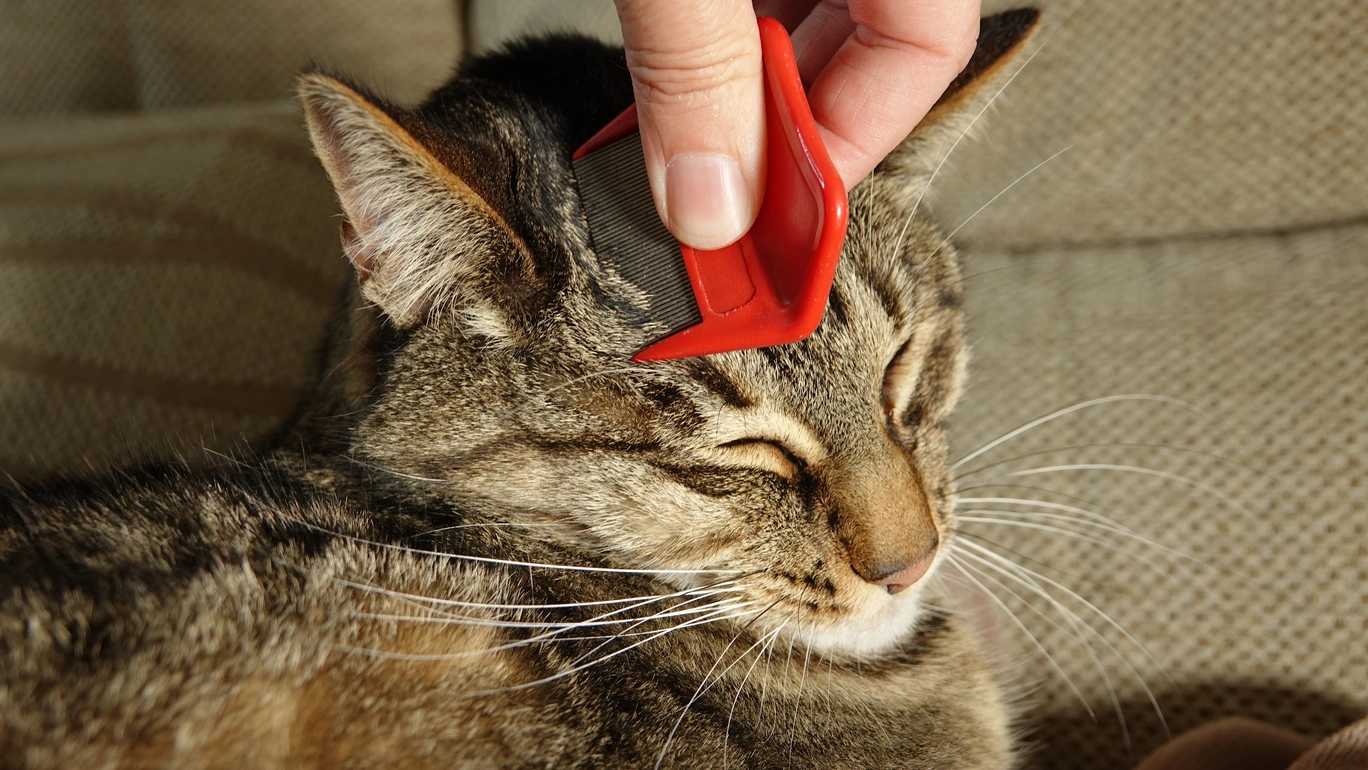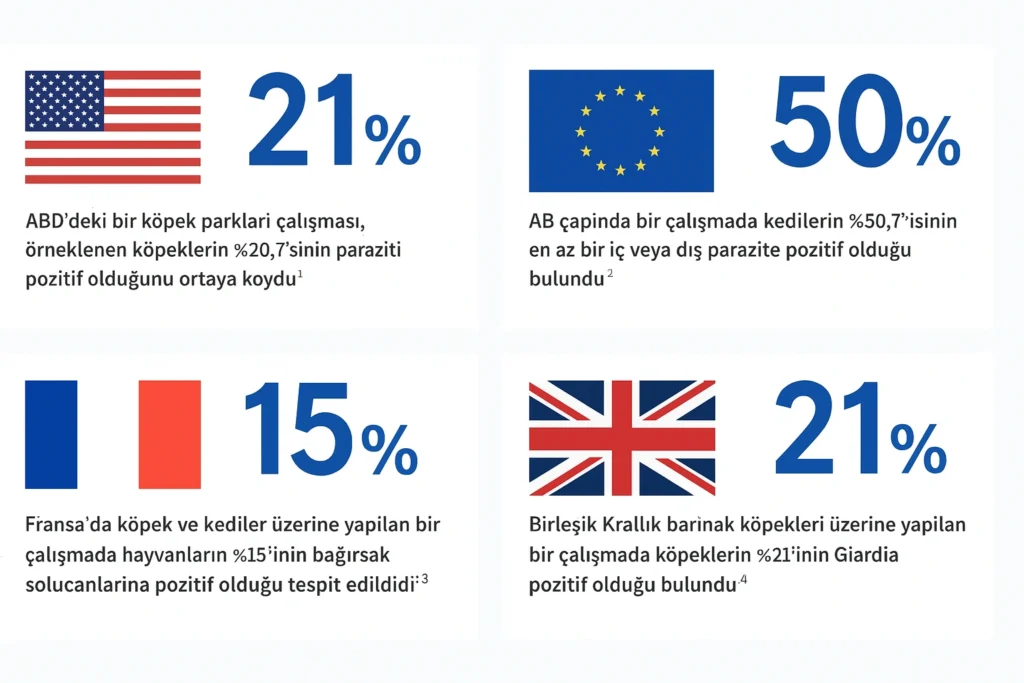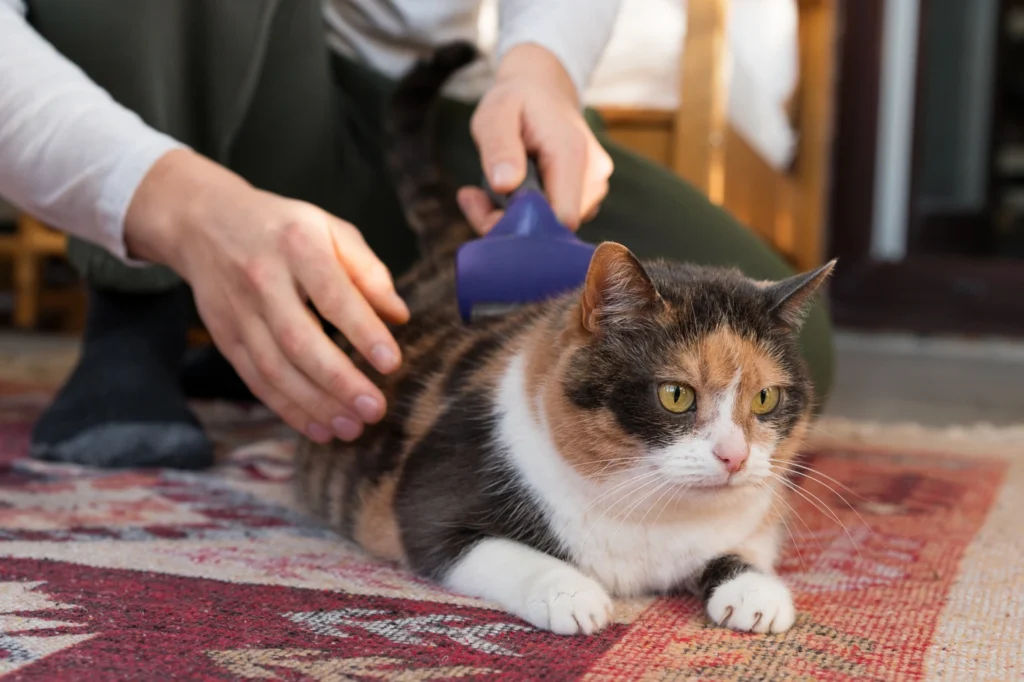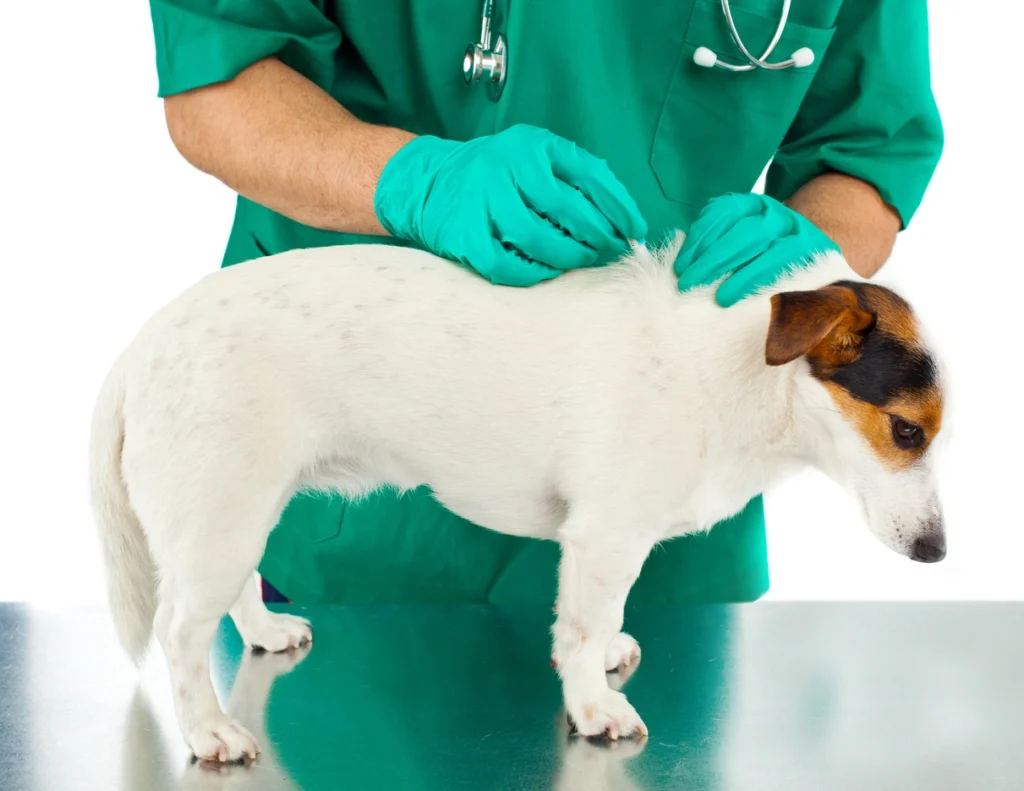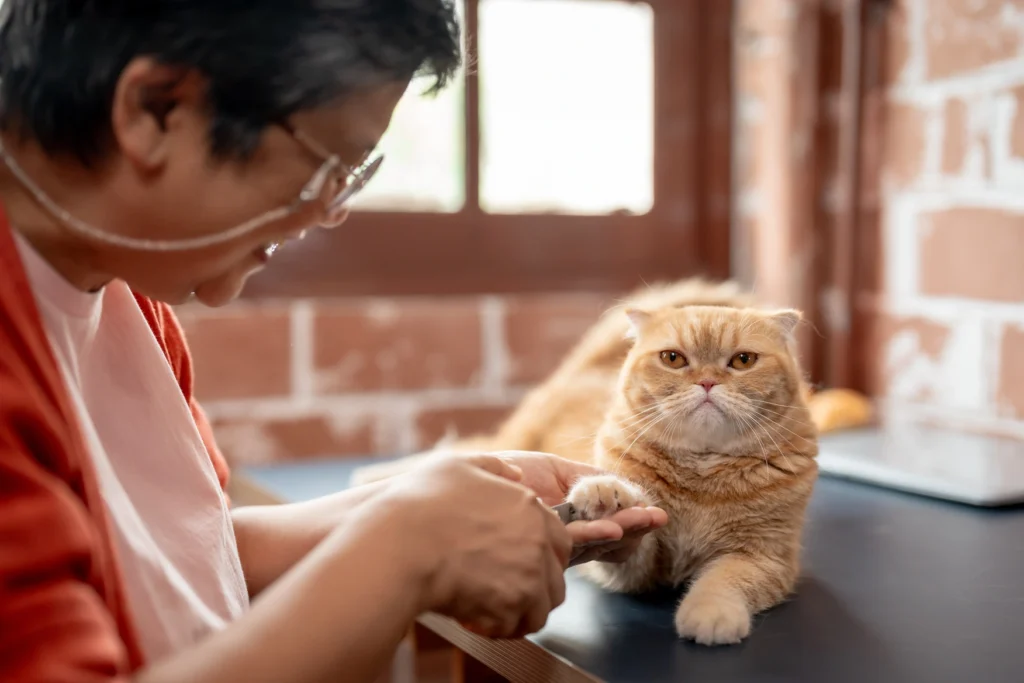Internal and External Parasite 2025: Why Act Now?
Internal (endoparasite) and external (ectoparasite) threats to our pets are shifting in 2025 as climate change, increased travel and vector movement redraw their geographic maps. Recent data show a marked spread of parasite-borne diseases toward northern latitudes and higher altitudes.
Why Are Internal and External Parasite Risks Rising in 2025?
- Climate warming → Ticks and mosquitoes stay active for longer periods.
- Wildlife–city overlap → Foxes, jackals and other reservoirs approach urban areas.
- Animal transport → Adopted or travelling pets carry regional risks across borders.
- Lack of year-round prevention → Irregular treatments feed the “low risk = no risk” myth.
Parasite Risk Map: The 2025 Revolution
Internal and external parasite 2025 maps show that rising temperatures extend vector life cycles.
- Ticks: Heartworm has advanced as far north as the Kansas–Maryland line in the USA; in Türkiye, cases rise along the Black Sea coast.
- Mosquitoes: Expanding Aedes albopictus populations boost heartworm and West Nile risks in coastal provinces.
- Fleas & lice: Next-generation European surveys report up to 18 % winter activity.
Internal Parasites: What to Know in 2025
1. Gastro-intestinal Nematodes
Roundworm (Toxocara spp.), hookworm (Ancylostoma spp.) and whipworm (Trichuris spp.) remain the most common issues. Underdosing dewormers triggers anthelmintic resistance.
2. Double Defence Against Tapeworms
Control fleas for Dipylidium caninum; avoid raw meat for Echinococcus granulosus.
3. Heartworm (Dirofilaria immitis)
CAPC projections show heartworm moving north of the Mississippi corridor; along Türkiye’s coastline, rising Aedes albopictus counts parallel new cases.
External Parasites: Ticks, Fleas and More
- Ticks (Ixodes, Rhipicephalus, Dermacentor) → Lyme, anaplasmosis, ehrlichiosis.
- Fleas (Ctenocephalides felis) → Allergic dermatitis, tapeworm vector.
- Mosquitoes → Heartworm, Leishmania vector (Phlebotomus).
- Mange mites (Sarcoptes, Otodectes) → Severe itching and secondary infection.
CAPC 2025 maps confirm the westward and northward expansion of tick habitats due to climate.
2025 Prevention Strategies
Year-Round (12 Months) Plan
- Monthly broad-spectrum chew or 3-month isoxazoline spot-on.
- Faecal exam + rapid test every six months.
- Choose tick products that kill within 24 h.
Aligning with ESCCAP Europe
ESCCAP recommends region-specific risk analysis for travelling pets and tailoring protocols accordingly.
Antiparasitic Resistance: A 2025 Threat on the Rise
Studies from 2025 show that routine, unnecessary combination deworming accelerates AR development. Smart management: targeted therapy, accurate dosing, rotation and regular coproculture checks.
Climate Change and Parasite Ecology
A 2024 study in “Parasites & Vectors” found that warmer temperatures shorten internal and external parasite development in vectors like Anopheles by up to 30 %.
- Shorter incubation ⇒ faster spread
- Longer activity season ⇒ infection window doubles from four to eight months
- Geographical shift ⇒ a 1 °C rise lifts tick altitude limits by ~150 m
These findings debunk the belief that “no need for spot-ons in winter.”
Internal and External Parasite 2025 Protection Protocol
| Interval | Action | Description |
|---|---|---|
| Monthly | Broad-spectrum chew (Internal + External) | Isoxazoline + milbemycin kills ticks within 12 h and prevents heartworm larvae. |
| Every 3 months | Topical spot-on (External) | Provides ≥ 90-day flea/lice protection. |
| Every 6 months | Faecal screen (Internal) | Flotation or PCR; essential for monitoring resistance. |
| Yearly | Heartworm antigen + microfilaria test | Especially important for travelling dogs. |
| Pre-travel | Region-specific risk analysis (ESCCAP) | Example: a cat visiting the Aegean doesn’t need a Leishmania titre. |
Tips:
- Apply treatments in the evening; isoxazoline spot-ons spread through the dermis in 4-6 h.
- Rotation: combine spot-on + chew April–September in humid climates; chew only in winter.
Service Fees & Appointments
Prices vary by clinic; for current packages, campaigns and appointments see the Zoom Veteriner Service Tariff. Delaying internal and external parasite control can raise treatment costs five- to ten-fold.
Antiparasitic Resistance (APR) and the 2025 Road-map
- APR reports up 35 % by 2025.
- Multi-active “shotgun” products double resistance speed.
- Coproculture and FAMACHA scoring enable targeted therapy.
Sustainable Options: A Guardian article warned that spot-ons can harm waterways. Shorter schedules plus mechanical control (combing, hot-wash laundry) will trend in 2025 and beyond.
Home Hygiene & Eco-Friendly Practices
- HEPA-filter vacuum → eliminates 96 % of flea pupae.
- 40 °C laundry → dissolves the sticky lipid shell of eggs.
- Bentonite litter → traps internal-parasite eggs indoors.
Internal and external parasite 2025 targets require not just spot-ons but a sanitised environment.
Nutrition & Immune Support
Diets rich in omega-3 and taurine speed skin recovery after flea allergy or mange. Lactobacillus casei supplements cut worm colonisation by 23 % (2024 study).
Critical note: Supplements cannot replace veterinary-prescribed antiparasitics; they only add a protective layer.
Sustainable Future: Greener Parasite Control
- Biological control: Nematophagous fungi break parasite eggs in faeces.
- Eco-Spot-On: Fipronil-free formulas expected mid-2025 (EMA pending).
- Pet + Wildlife synergy: Tick-vaccine trials underway in fox and hedgehog populations.
Frequently Asked Questions (FAQs) – Internal and External Parasite 2025
What are internal and external parasites, and how do they differ?
Internal parasites (Toxocara, Ancylostoma, heartworm, etc.) live inside the animal; external parasites (ticks, fleas, mange mites) live on the skin or coat. Both feed on blood, tissue fluid or gut contents and can transmit disease.
What is the strongest evidence that parasite risk is rising in 2025?
CAPC and ESCCAP 2024-2025 reports show that warming climate doubles tick activity seasons and has pushed heartworm positivity up by about 30 %.
How can I tell if my cat has internal or external parasites?
Vomiting, diarrhoea, pot-belly and weight loss point to internal parasites; intense scratching, hair loss and skin redness suggest external parasites. Ticks are visible to the eye, while heartworm is detected by a blood test.
How often should I give my dog parasite medication?
The standard is monthly broad-spectrum protection plus a faecal test every three months; in high-risk areas, your vet may shorten the interval to four weeks.
Is the prevention schedule different for puppies and kittens?
Yes. From eight weeks of age, deworm every two weeks and apply monthly spot-ons until 12 weeks; after that, switch to the adult schedule.
Do internal parasite drugs also kill external parasites?
Most do not; that’s why a combo tablet or a spot-on + tablet strategy is needed. Look for products labelled “broad-spectrum endectocide.”
If my pet’s heartworm test is negative, should I keep giving the preventive?
Yes. A negative test isn’t a reason to stop; skipping doses opens the door to new infection. Year-round prophylaxis is the standard.
Can internal and external parasites spread to humans?
Yes. Toxocara, Giardia and tick-borne diseases are zoonotic. Children playing in sandboxes are especially at risk—hand hygiene and pet protection are essential.
Which is more effective: flea collar or spot-on?
Isoxazoline spot-ons give 12- to 16-week fast-acting protection; collars add a barrier but are not 100 % effective on their own.
Do internal and external parasites affect neutered pets too?
Hormonal status doesn’t change the risk; neutered cats and dogs need the same protection.
Can an indoor-only cat get external parasites?
Yes. Flea eggs can hitch-hike on shoes and ticks can ride in on houseplants, so indoor cats still need regular protection.
Can natural or herbal methods replace veterinary drugs?
Mint oil or neem spray may help as extras, but they cannot match the efficacy of licensed veterinary products; don’t rely on them alone.
How do I know if parasites have developed resistance to a treatment?
If eggs are still seen in a faecal test after treatment, or ticks/fleas re-appear within a few weeks, resistance is possible—switch drug class with your vet’s advice.
Which products are safe for pregnant or nursing animals?
Spot-ons containing selamectin or lufenuron are generally considered safe; ivermectin derivatives need dose limits. Always follow your vet’s guidance.
When should I use sand-fly repellent to prevent Leishmania?
In Mediterranean climates, use a pyrethroid collar or spot-on from April to October; sand flies are most active at dusk, so add extra evening precautions.
My pet seems lethargic after internal and external parasite medication—normal?
Mild loss of appetite or sleepiness can pass within 24 h; if vomiting, tremors or breathing issues occur, contact your vet immediately.
Can the same product be used on both cats and dogs?
No. Permethrin, for example, is safe for dogs but toxic to cats. Always check the label for “cat-safe” or “dog-safe.”
Why rely on medication instead of just pulling ticks off by hand?
Hand removal can squeeze the tick and speed pathogen transfer. Systemic medication kills the tick before it feeds, lowering disease risk.
Do 2025 reports predict price increases for internal and external parasite drugs?
Yes. Rising raw-material costs and currency fluctuations could raise prices by 10-15 %; bundle plans and clinic memberships can save money.
Does internal and external parasite protection harm the environment?
Modern isoxazolines have low water solubility; with correct dosing and waste disposal the environmental risk is minimal. Dispose of packaging separately and avoid chemical spills.

